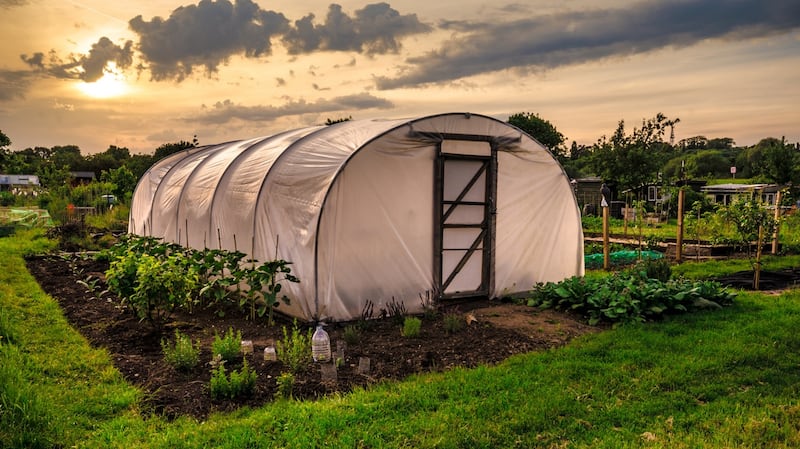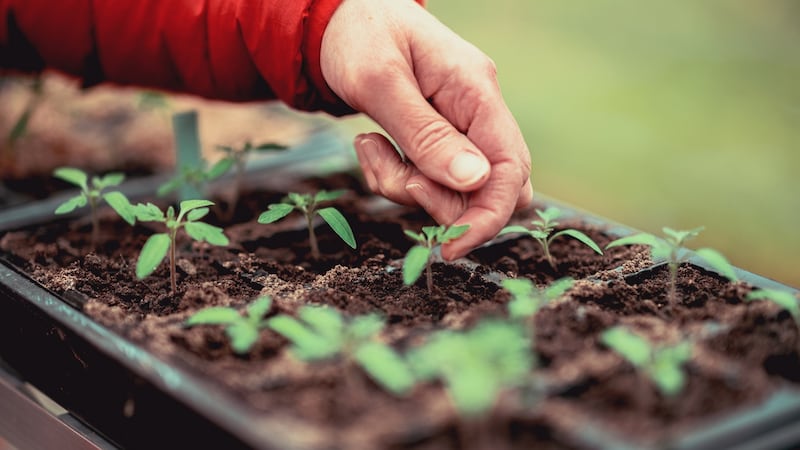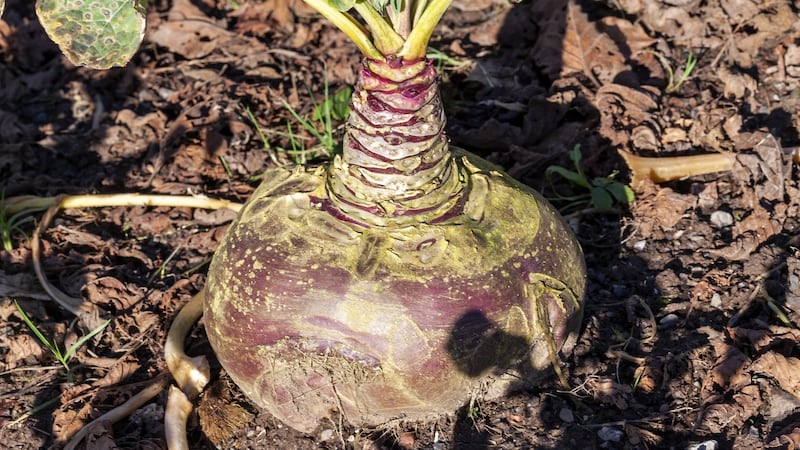For those of us who like to grow at least a little of our own food, no month of the gardening year is busier than April. There are vegetable beds to be prepped, seed potatoes and hardy plants to get into the ground, tender heat-lovers to gently pot on under cover, burgeoning trays of baby seedlings to prick out and yet more seed to be sown.
If you have a polytunnel or glasshouse, this is also the month when all of that precious protected growing space starts to quickly fill up, as April’s longer, brighter days but cold nights mean that very careful ventilation and well-judged irrigation can be a twice-daily chore.

The result is a crazy but exhilarating juggle where timing is everything, the horticultural version of keeping a dozen balls in the air while simultaneously dancing the cha-cha, but oh so worth it in the end for all the joy and pleasure that it provides.
Key to its success is the art of raising plants from seed, a skill that once mastered has the almost-magical power to quickly, cheaply and dramatically transform the most unpromising of plots into a kitchen garden filled with delicious, home-grown produce.
But first a word of gentle warning, which is that at this time of year, while harsh spring frosts and even wintry showers are still a real possibility, the vast majority of seed needs to be sown under cover. The latter could be a glasshouse or polytunnel, but a porch, conservatory or simply a few indoor windowsills are other very suitable spots. Whichever you plump for, remember that high levels of bright, natural daylight will be as critical to the healthy growth of your baby seedlings as warmth; without it they’ll soon grow weak and leggy.
Gentle heat
Bear in mind too that while seed of almost all species of vegetables and herbs need gentle heat for good germination rates (germination is possible at temperatures as low as five degrees but optimal temperatures are typically in the 20-30 degree range), the resulting seedlings can quickly become soft and leggy when temperatures are too high. So if you’re using a heated propagator, heated mat or electric coil cable to provide bottom heat, it’s best to move pots/trays of seedlings to a slightly cooler spot once they emerge. The exceptions are heat-loving seedlings of tender species such as tomatoes, aubergines, cucumbers and melons, all of which really resent temperatures below 10 degrees.
Sufficient moisture is also essential for good germination and healthy growth, but avoid the common pitfall of over-watering. Avoid top-watering also, which runs the risk of precious seeds being accidentally sluiced off the surface of the compost or fragile baby seedlings being bruised or even broken. Instead it’s best to bottom-soak freshly sown pots or trays by placing them up to their waists in a container filled with tepid, clean water to allow them to gently wick up moisture. Between watering, allow the compost to partially dry out, but never so much that it’s bone dry (ideally it should always be slightly damp). It’s also best to water in the morning to avoid the risk of vulnerable seedlings sitting in wet, cold compost during any cold spring nights.
To further boost germination rates by locking in heat and humidity, I like to cover the top of any freshly-sown pots or trays of seedlings with a clear plastic lid, sheet of glass or a transparent freezer bag sealed with an elastic band. Then once signs of germination become obvious – lots of baby seedlings – I gradually remove them.
Good-quality compost
Heat, good light levels, sufficient moisture and humidity aside, it's also important to use fresh, good-quality seed from a reputable supplier, clean, sturdy trays or pots and a good-quality seed compost. Online Irish suppliers such as Cork-based Fruithill Farm, Sligo-based QuickCrop and Dublin-based Mr Middleton all stock a wide range of high-quality, very long-lasting pots and propagation trays, including models with clear, vented lids ideal for providing the sort of protected, humid conditions typically needed for good seed germination. All of the above also supply a wide range of herb and vegetable seeds suitable for sowing at this time of year, as do good Irish garden centres and online specialist seed suppliers including organic producers Brown Envelope Seeds (brownenvelopeseeds.com), Seedaholic (seedaholic.com), Green Vegetable Seeds (greenvegetableseeds.com)and Irish Seed Savers (irishseedsavers.ie).
As for a good-quality seed compost, Klasmann’s peat-free option is excellent (but pricy) while Westland’s seed and cutting compost (the one that comes in a blue and yellow bag) gives great results and is cheaper but unfortunately not peat-free. I also heartily recommend adding a shallow layer of fine-grade vermiculite (available from all good Irish garden centres) to the surface of the seed compost before and after sowing to boost the overall rate of germination as well as the health and vigour of the resulting seedlings.
Once they’ve developed their first true set of leaves, your seedlings are ready to “prick out” (a developmental stage akin to a young baby going from a Moses basket to a proper cot). To do this, use a pencil or stick to gently prise each seedling out of the compost while holding it by its leaves, making sure not to damage its fragile stem or root system. Then transfer it to its new pot or cell tray by gently burying its baby root system in compost and then giving it a gentle watering.

Last but not least, keep a very careful watch out for those cold spring nights when late, harsh frosts are forecast. Just a couple of layers of horticultural fleece or several sheets of newspaper spread lightly over the trays or pots of seedlings before nightfall will help to protect them from damage. Or if you really want to mollycoddle them, consider using a thermostatically controlled greenhouse heater (see polydome.ie).
THIS WEEK IN THE GARDEN
Mid-April is a good time to sow seed of winter leeks, Brussels sprouts, cauliflower, chard, lettuce (make sure to keep freshly sown lettuce seed at a temperature below 25 degrees), calabrese, kohlrabi, kale, cabbage, swede, perpetual spinach, beetroot, rocket and scallions under cover for transplanting outdoors in late spring or into a polytunnel or glasshouse in the coming weeks.

Outdoors in the garden, peas, radishes and turnips can be direct-sown in their final growing positions into a weed-free, moisture-retentive but free-draining, fertile, friable soil, making sure to protect both seed and emerging seedlings from damage from slugs, snails, mice and/or birds.
DATES FOR YOUR DIARY
To celebrate Rhododendron Week (April 12th-18th), the National Botanic Gardens in Kilmacurragh,Co Wicklow, is hosting a series of three free online talks by guest speakers Dr Matthew Jebb, director of the National Botanic Gardens; Richard Baines, curator of Logan Botanic Gardens, Stranraer, Scotland; and Seamus O'Brien, Kilmacurragh Garden's head gardener. Booking via Eventbrite is essential, eventbrite.ie.
Hip-hip-hurrah . . . After a publishing hiatus of several months, Ireland's oldest gardening magazine, The Irish Garden, co-edited by well-known gardener, writer and broadcaster Gerry Daly and garden writer and lecturer Mary Keenan of Gash Gardens, is back on newsagent shelves and celebrating its 30th birthday with a glossy redesign and oodles of great content by many of the country's best-known growers, gardeners and designers.















